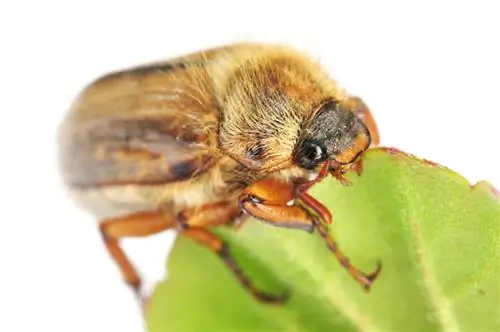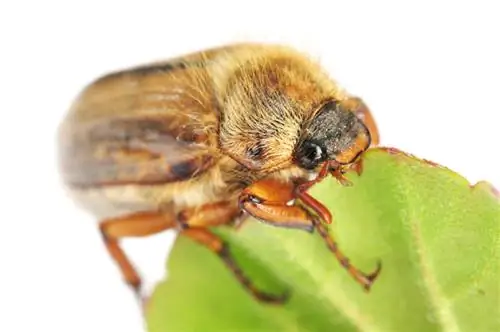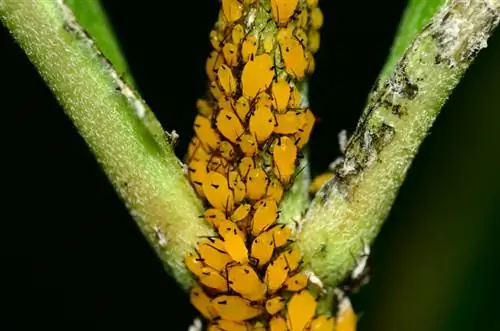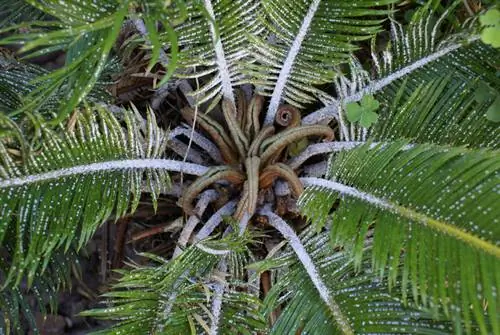- Author admin [email protected].
- Public 2023-12-16 16:46.
- Last modified 2025-01-23 11:20.
Unfortunately, geraniums tend to contract various diseases and pests, especially when they are too moist or in a location that is too dark. In the event of any pest infestation, you should act quickly, otherwise the plants will be irreparably damaged and other plants can also be affected - pests usually spread very quickly and can then become a pest that is difficult to control.

How to control pests on geraniums?
Common pests on geraniums are thrips, whiteflies, aphids and spider mites. You can combat these with a soapy solution of water, dish soap and cooking oil by spraying or wiping the plants several times.
Soapy water helps against most geranium pests
Especially if the pest infestation is not yet too serious, you can use a proven and much more environmentally friendly home remedy instead of the poison bottle: soapy water. The following mixture has proven particularly effective for geraniums:
- one liter of water (at best rainwater)
- a strong splash of dishwashing liquid (those with a citrus scent are very suitable!)
- two tablespoons of cooking oil
Stir this mixture thoroughly and spray the plant all over. If the infestation is severe, you can also rub the leaves and shoots with a cloth dipped in the lye. Just make sure that the lye does not get into the substrate! In addition, the treatment should be repeated several times every few days in order to catch the last eggs and larvae that have been laid.
Common pests on geraniums
Most of the pests commonly found on geraniums also attack other plants, which is why quick action is essential. In addition, these are mostly leaf sap-sucking insects that preferentially attack weakened plants and have an even greater impact on them - not to mention the visually unsightly damage.
Thrips
The fringed-winged beetles are also known in some places as “thunderbugs” or “thunderflies”. In addition to damaging leaves and shoots, the animals are also considered carriers of various viral diseases.
Whitefly
Whiteflies (actually a whitefly) can be discovered quickly - there are numerous white dots on the underside of the leaves, which are the eggs and larvae. In addition, you will quickly notice clouds of small whiteflies as soon as you even touch your geraniums infected with them.
Aphids
The black aphids, which can be up to seven millimeters long depending on the species, prefer to settle on the undersides of the leaves and suck out leaf juice with their proboscis. The animals secrete sticky and sweet excretions, which in turn attract other pests (e.g. ants) and fungi (sooty mold).
Spider mites
The tiny spider mites can hardly be seen with the naked eye, but their feeding damage is even more so. These pests prefer to appear in dry and hot weather.
Tip
You can prevent pest infestation by planting and caring for your geraniums appropriately, ensuring a sufficiently large planting distance and also regularly removing wilted and dried plant parts.






